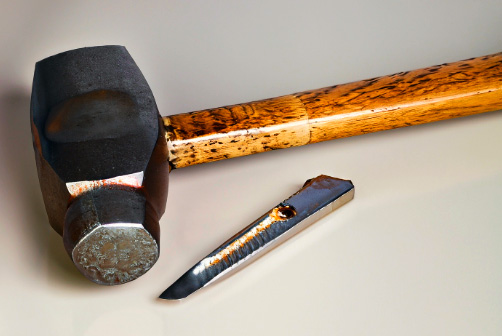Sledgehammer vs scalpel: TV planning is about power as well as precision

Opinion
Spot attribution has enabled us to make TV accountable like digital, but it’s a narrow measurement that misses the true power of TV.
Early on in my media career, someone once told me that TV was like a sledgehammer, digital a scalpel. It’s always stuck with me and, while I think TV has a little more subtlety than the metaphor would suggest, it does point to what the channels do best.
Or perhaps it did.
As I plotted my course through the first decade of my career, cheerfully wielding my sledgehammer to reach millions of people in one fell swoop of a carefully placed 30-second ad, there was change afoot. Digital was on the rise and was coming to kill TV. (Side note: I hated this phase of media, when everyone said it was “either/or”. Digital will no more “kill” TV than TV “killed” radio or radio “killed” print.)
If only we could demonstrate the immediate power of TV; if only we could take the scalpels to it and make it as personable and accountable as digital seemingly could.
The birth of spot attribution
And thus spot attribution was born. In a nutshell, spot attribution is the methodology whereby, in the immediate minutes following the airing of a TV spot, online actions (usually website visits, sales, sign-ups etc) are attributed back to said spot. Suddenly, brands could see in almost real time the “effect” TV was having right down to a spot level — something previously reserved to DRTV advertisers and their call-centre models.
At this point, I’d like to make it clear I’m not against spot attribution and I appreciate the role it plays in helping us make data-led decisions to improve our TV planning and buying.
What I am against is the perception that it provided a silver bullet to make TV as optimisable and accountable as digital or that it “proved” the effect of TV advertising. By trying to make one channel conform to the perceived reporting standard of another, we did neither of them any benefit.
A very wise person once said to me: “All adverts are response adverts — otherwise what’s the point?” And they were right: a brand ad with no call to action should still help drive a response of some kind, even if that response is far outside an attribution window.
I’m living proof of this: while awaiting the birth of my daughter, my wife and I spent countless hours researching different brands of prams, car seats and all sorts of other baby essentials. But we never once discussed which brand of nappy to buy and just instinctively added one to our weekly groceries — something I attribute to said brand’s consistent presence on my TV in the past 36 years of my life.
Post-cookie re-evaluation
While the news that the phase-out of third-party cookies has once again been delayed might not come as a surprise to many of us, it won’t stop the ongoing discussions about how our online presence is tracked for advertising purposes.
Most spot attribution uses first-party cookies, so it’s not directly impacted by the changes already in motion, but the overall discussion of how digital is measured and tracked in a post-cookie world has led to introspection across the entire media landscape. For TV, the question becomes: just because we could measure the response uplift of every single spot in a limited window, should we?
The genie is out of the bottle and we’re not getting it back in. As we look at how media is measured and optimised in 2025 and beyond, it’s a good time to re-evaluate our relationship with TV. Spot attribution is great for relative analysis: which channels are delivering the most immediate uplifts? If I want to chase sign-ups, should I be buying Countdown or Coronation Street? Is my audience more likely to search that call to action on a Monday or a Friday?
Widening our vision
The danger is if we stop there. Because if that’s all we look at and that’s all we optimise towards, we will ultimately sign our own P45s.
Ask any good accountant: the most efficient spend is £0. If we narrow our vision to just 15-minute windows, we miss the true power of TV in all its forms: its power to move us, to make us laugh or cry or cheer or shout. Its power to make us buy nappies.
So what’s the answer? As with so many things in life, there is no single, easy solution. All of us — brands, agencies and broadcasters — need to always start with a clarity of purpose.
The TV campaign will do something for your brand, but are you measuring the success in the long or the short term? Chances are you should be doing both. And for that, you’ll need different measurement frameworks to understand what worked and what didn’t.
This is going to be even more important as we continue to transition into an AV landscape fragmented by choice and where linear remains important but no longer the behemoth it was.
It’s a really exciting landscape to play in and you’ll find me there, sledgehammer in one hand and scalpel in the other.
 Gregor Chalmers is head of broadcast at The Kite Factory
Gregor Chalmers is head of broadcast at The Kite Factory




